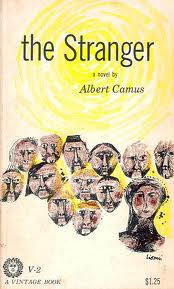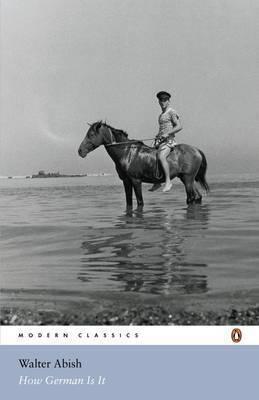Author Photo And Bio
 1. The Arabian Nights: Tales from a Thousand and One Nights (c. 1450). Scheherazade receives the grim honor of marrying her King, who executes his wives on the day after the wedding night. Sche herazade delays her death by at least one thousand nights by telling tales that grow out of each other like the designs in a Turkish rug. Those childhood familiars, Sindbad, Ali Babba, and Aladdin, are all here.
1. The Arabian Nights: Tales from a Thousand and One Nights (c. 1450). Scheherazade receives the grim honor of marrying her King, who executes his wives on the day after the wedding night. Sche herazade delays her death by at least one thousand nights by telling tales that grow out of each other like the designs in a Turkish rug. Those childhood familiars, Sindbad, Ali Babba, and Aladdin, are all here.
 2. Daniel Deronda by George Eliot (1874–76). Daniel Deronda first sees Gwendolyn Harleth gambling at a fashionable resort and asks himself whether “the good or evil genius is dominant” in her. He is a man of ideas; she is an egotistical, spoiled girl. Can Daniel redeem her? Another character who needs saving is Mirah Cohen, yet through her, Daniel finds a form of salvation by discovering his hidden Jewish heritage in this novel that exposes the deeply rooted anti-Semitism of Victorian England.
2. Daniel Deronda by George Eliot (1874–76). Daniel Deronda first sees Gwendolyn Harleth gambling at a fashionable resort and asks himself whether “the good or evil genius is dominant” in her. He is a man of ideas; she is an egotistical, spoiled girl. Can Daniel redeem her? Another character who needs saving is Mirah Cohen, yet through her, Daniel finds a form of salvation by discovering his hidden Jewish heritage in this novel that exposes the deeply rooted anti-Semitism of Victorian England.
 3. The Decameron by Giovanni Boccaccio (1351–53). The Big Chill meets the Black Death when a group of seven women and three men leave Florence to escape the plague of 1348. To entertain themselves, they tell stories according to topics selected by that day’s appointed “king” or “queen.” Like the plague, the hundred tales, mostly of love and deceit, leave no strata of society unscathed, and many of them are delightfully bawdy and irreverent. Have you heard the one about the monk who seduced a woman by claiming to be the angel Gabriel?
3. The Decameron by Giovanni Boccaccio (1351–53). The Big Chill meets the Black Death when a group of seven women and three men leave Florence to escape the plague of 1348. To entertain themselves, they tell stories according to topics selected by that day’s appointed “king” or “queen.” Like the plague, the hundred tales, mostly of love and deceit, leave no strata of society unscathed, and many of them are delightfully bawdy and irreverent. Have you heard the one about the monk who seduced a woman by claiming to be the angel Gabriel?
 4. The Stranger by Albert Camus (1942). The opening lines—“Mother died today. Or, maybe, yesterday. I can’t be sure”—epitomize Camus’s celebrated notions of “the absurd.” His narrator, Meursault, a wretched little Algerian clerk sentenced to death for the murder, feels nothing: no remorse, love, guilt, grief, or hope. But he’s not a sociopath; he’s just honest. An embodiment of existential philosophy, he believes in no higher power and accepts that we are born only to die. Our only choice is to act “as if” life has meaning and thereby gain some freedom.
4. The Stranger by Albert Camus (1942). The opening lines—“Mother died today. Or, maybe, yesterday. I can’t be sure”—epitomize Camus’s celebrated notions of “the absurd.” His narrator, Meursault, a wretched little Algerian clerk sentenced to death for the murder, feels nothing: no remorse, love, guilt, grief, or hope. But he’s not a sociopath; he’s just honest. An embodiment of existential philosophy, he believes in no higher power and accepts that we are born only to die. Our only choice is to act “as if” life has meaning and thereby gain some freedom.
 5. The Pillow-Book of Sei Shonagon (1592). This groundbreaking nonfiction work by a tenth-century lady of the Chinese court uses the list as the structure for personal essays that are bold, funny, unapologetic, and cantankerous. With titles such as “Embarrassing Things,” “Hateful Things,” and Things,” Shonagon reflects on her society, its mores in particular, and on humanity in general.
5. The Pillow-Book of Sei Shonagon (1592). This groundbreaking nonfiction work by a tenth-century lady of the Chinese court uses the list as the structure for personal essays that are bold, funny, unapologetic, and cantankerous. With titles such as “Embarrassing Things,” “Hateful Things,” and Things,” Shonagon reflects on her society, its mores in particular, and on humanity in general.
 6. Nothing (1926), Doting (1950), and Blindness (1952) by Henry Green. Green was the pen name for British industrialist Henry Vincent Yorke, whose kaleidoscopic, impressionistic novels (including cryptic plots and sentences without articles or verbs) have drawn comparisons to fellow high-modernists Gertrude Stein, Picasso, and Monet. Blindness details the terror of a blind young man confined to a room by his wife. Doting (a comedy of adulterous near-misses) and Nothing (about two ex-lovers whose children are getting married) consist almost entirely of pitch-perfect dialogue.
6. Nothing (1926), Doting (1950), and Blindness (1952) by Henry Green. Green was the pen name for British industrialist Henry Vincent Yorke, whose kaleidoscopic, impressionistic novels (including cryptic plots and sentences without articles or verbs) have drawn comparisons to fellow high-modernists Gertrude Stein, Picasso, and Monet. Blindness details the terror of a blind young man confined to a room by his wife. Doting (a comedy of adulterous near-misses) and Nothing (about two ex-lovers whose children are getting married) consist almost entirely of pitch-perfect dialogue.
 7. How German Is It by Walter Abish (1980). Abish wields not pen, but scalpel, vivisecting Germany’s cult of appearances and culture of denial. His protagonist is Ulrich, whose father was executed for plotting against Hitler. Ulrich —a cipher who married, conspired with, and has now informed on a left-wing terrorist —has returned to his fatherland after a long absence to seek his estranged wife and his own true paternity and patrimony. With the discovery of a mass grave and the descent of his model citizen brother into debauchery and thuggery, Ulrich sees the residue of prewar Germany in the postwar world.
7. How German Is It by Walter Abish (1980). Abish wields not pen, but scalpel, vivisecting Germany’s cult of appearances and culture of denial. His protagonist is Ulrich, whose father was executed for plotting against Hitler. Ulrich —a cipher who married, conspired with, and has now informed on a left-wing terrorist —has returned to his fatherland after a long absence to seek his estranged wife and his own true paternity and patrimony. With the discovery of a mass grave and the descent of his model citizen brother into debauchery and thuggery, Ulrich sees the residue of prewar Germany in the postwar world.
 8. A House for Mr. Biswas by V. S. Naipaul (1961). An Indian man living in Trinidad, Mr. Biswas is a tenant in some houses and an unfavored relative in others. All he wants is a home of his own. His adult son narrates this story of his monumental search for a home and all that implies. The quest becomes a metaphor for the displacements of postcolonial life in this novel that, while filled with poverty and loneliness, is also a teeming, comic epic of Hindu life in Naipaul’s native West Indies.
8. A House for Mr. Biswas by V. S. Naipaul (1961). An Indian man living in Trinidad, Mr. Biswas is a tenant in some houses and an unfavored relative in others. All he wants is a home of his own. His adult son narrates this story of his monumental search for a home and all that implies. The quest becomes a metaphor for the displacements of postcolonial life in this novel that, while filled with poverty and loneliness, is also a teeming, comic epic of Hindu life in Naipaul’s native West Indies.
 9. Ask the Dust by John Fante (1939). This coming-of-age tale features Fante’s alter ego, Arturo Bandini: a poor, innocent, aspiring writer from Colorado, stretching out his limbo in 1930s Los Angeles. Bandini prowls the city’s dusty alleys for experience he can turn into prose, eats oranges in his hotel room, and dreams of success. Awkward with women, he falls for a troubled Mexican waitress but can’t sustain the relationship. He squanders what little money he earns. All he desires is literary glory, so that even when he nearly drowns, he thinks: “This was the end of Arturo Bandini —but even then I was writing it all down.”
9. Ask the Dust by John Fante (1939). This coming-of-age tale features Fante’s alter ego, Arturo Bandini: a poor, innocent, aspiring writer from Colorado, stretching out his limbo in 1930s Los Angeles. Bandini prowls the city’s dusty alleys for experience he can turn into prose, eats oranges in his hotel room, and dreams of success. Awkward with women, he falls for a troubled Mexican waitress but can’t sustain the relationship. He squanders what little money he earns. All he desires is literary glory, so that even when he nearly drowns, he thinks: “This was the end of Arturo Bandini —but even then I was writing it all down.”
 10. The Assistant by Bernard Malamud (1957). New York shopkeeper Morris Bober will do anything to support his family, except compromise the best values drawn from his Jewish faith. He is sad, and his family suffers, as they struggle to maintain their integrity in a grasping postwar world. The arrival of a new assistant, an Italian with a checkered past named Frank, presents complications (he falls in love with Bober’s daughter) and opportunities, as Malamud develops a surprising father–son relationship that suggests people are essentially good.
10. The Assistant by Bernard Malamud (1957). New York shopkeeper Morris Bober will do anything to support his family, except compromise the best values drawn from his Jewish faith. He is sad, and his family suffers, as they struggle to maintain their integrity in a grasping postwar world. The arrival of a new assistant, an Italian with a checkered past named Frank, presents complications (he falls in love with Bober’s daughter) and opportunities, as Malamud develops a surprising father–son relationship that suggests people are essentially good.